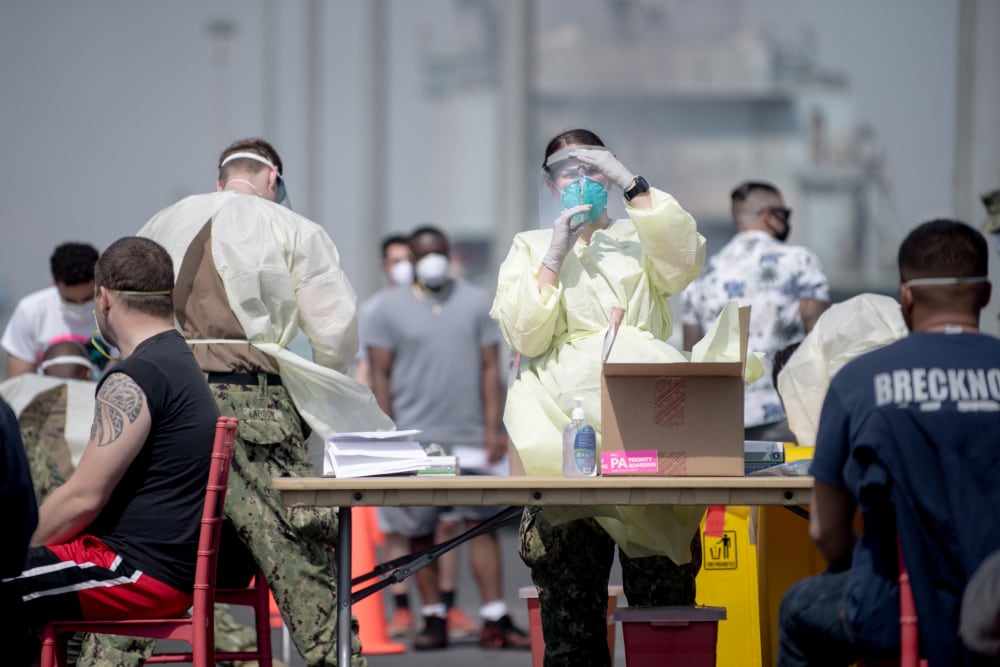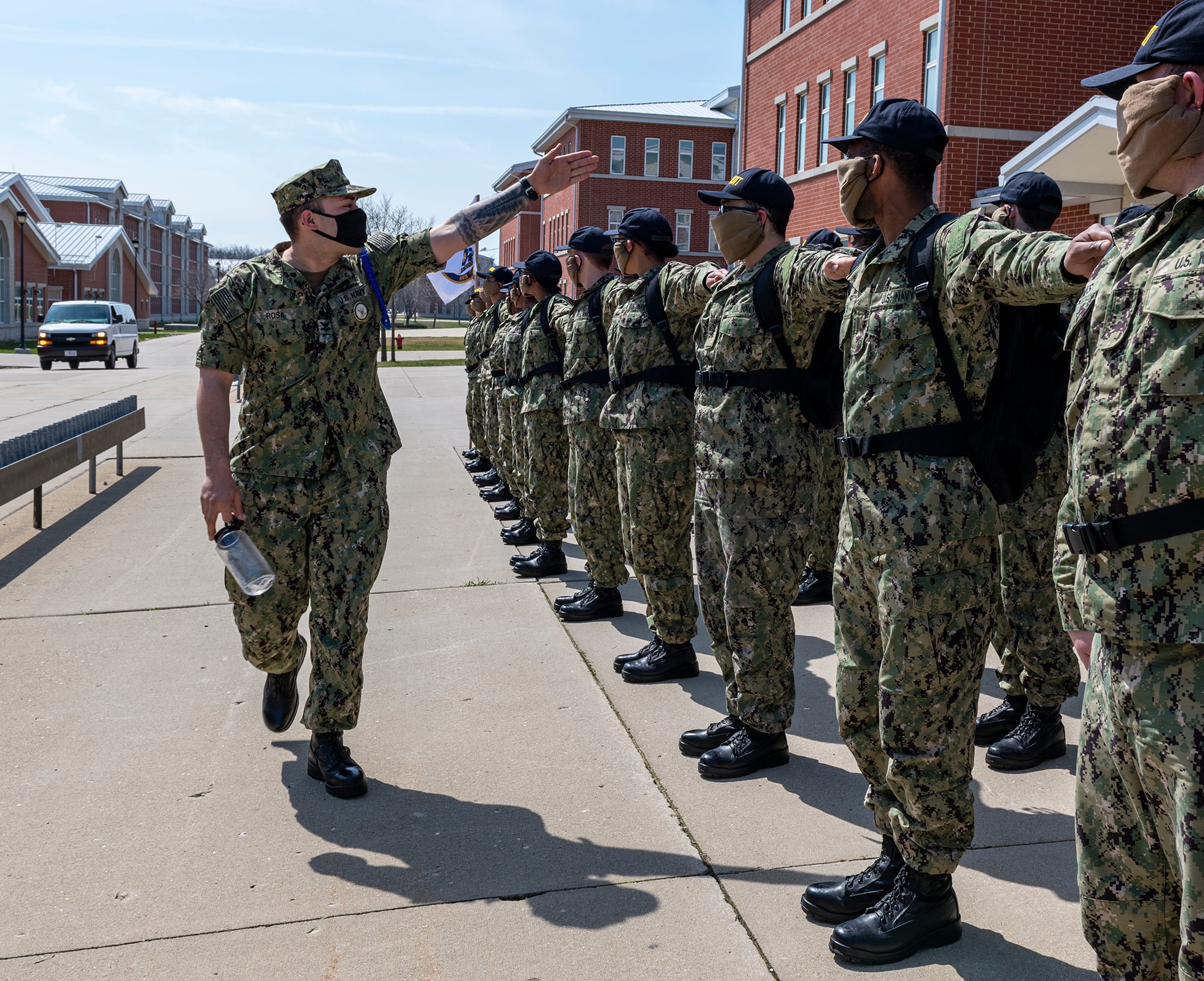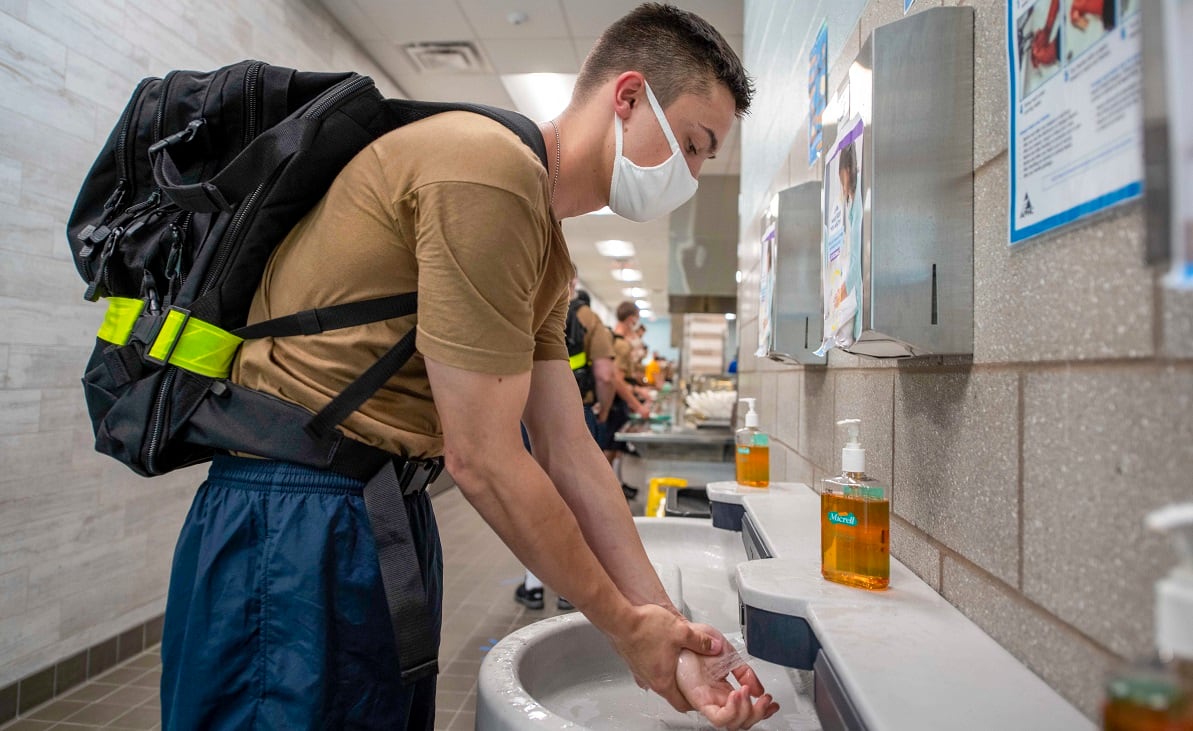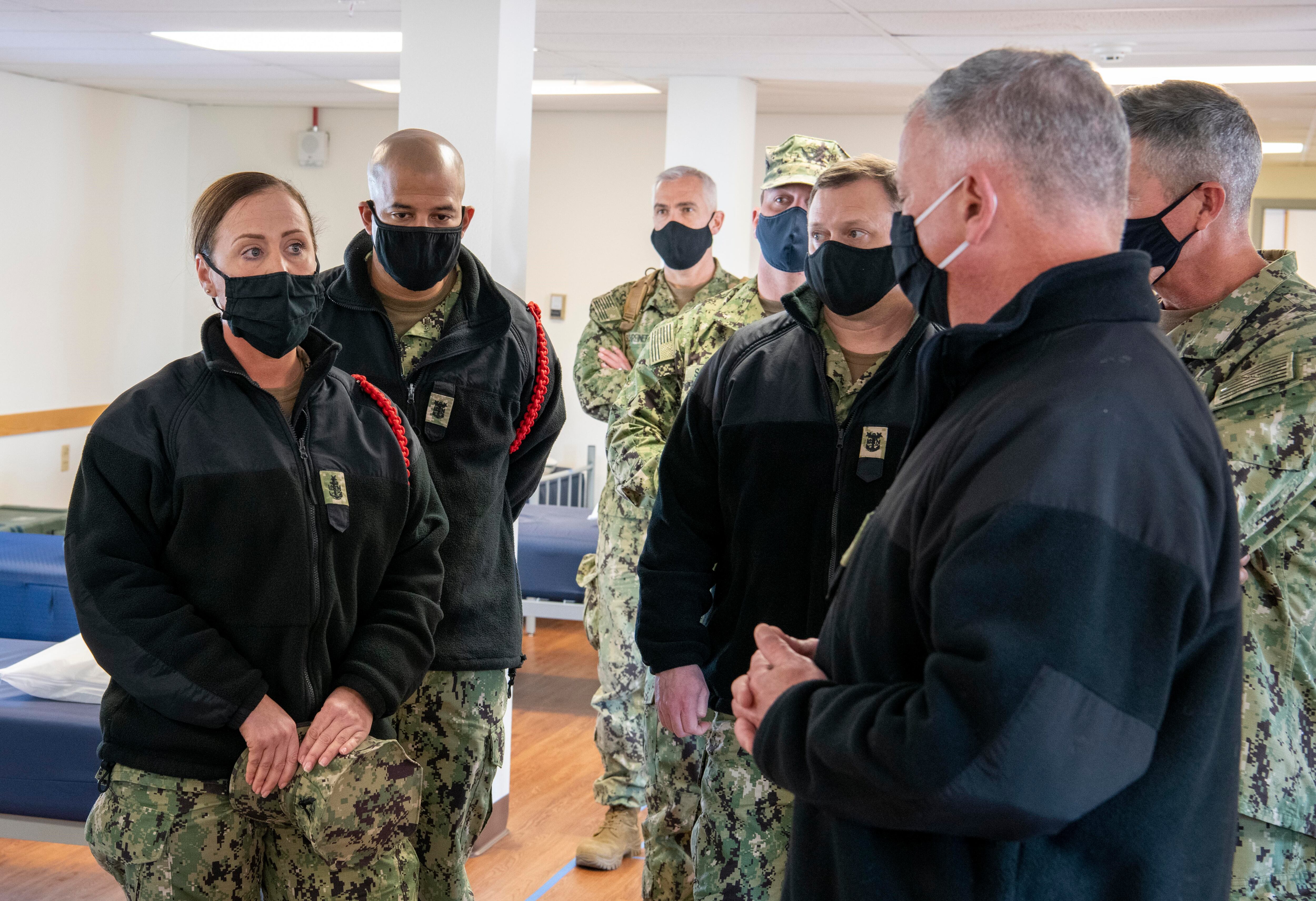The Navy is nixing a 14-day restriction of movement (ROM) for fully vaccinated recruits ahead of boot camp at Recruit Training Command in Great Lakes, Illinois.
The service is also ending its use of Fort McCoy to isolate newly arriving recruits in western Wisconsin before shipping them to Great Lakes. Since August 2020, brand new recruits have spent two weeks in ROM at the Army Reserve base. Unvaccinated recruits will now complete that phase at RTC.
“If a recruit arrives at RTC fully immunized (greater than 14 days since their final dose) with a copy of their immunization record in hand, they will not be required to ROM,” Lt. Cmdr. Phil Chitty, a spokesman for Naval Service Training Command, told Navy Times in an email.
According to a NAVADMIN released this month, ROM is not required before accession level courses if “students are immunized or arrive via bubble-to-bubble/protected travel.” Boot camp falls under accession level courses, Chitty said.
Other steps the Navy has recently taken to ease restrictions for those vaccinated include eliminating ROM for completely vaccinated crews.
RELATED

The move out of Fort McCoy provides leadership more options concerning staff schedules, and cuts down on time spent traveling the more than 200 miles between the Army base and Great Lakes, Chitty said.
“The transition of ROM operations from Fort McCoy to RTC is an important first step to normalizing training operations during the pandemic,” said Rear. Adm. Jamie Sands III, commander of Naval Service Training Command, in a Navy news release. “We could not have successfully trained new recruits during these past eight months without the help and support of Fort McCoy, the Army, the Wisconsin National Guard, and the hard work and flexibility of RTC’s staff.”
RELATED

While at Fort McCoy, recruits completed their ROM in open bay barracks in “pods” of no more than eight recruits to mitigate the chances of cross contamination in case a recruit did need to go into isolation, according to Recruit Training Command spokeswoman Lt. Kristina Wiedemann.

“Everybody was taped off … so they each had their own section of the open bay barracks, and within that section, there were four to six recruits and they would be spaced out,” Wiedemann told Navy Times.
That “pod” setup is intact at RTC, and the only notable shift is that the galleys are now in the barracks, meaning recruits aren’t leaving the barracks to eat, Wiedemann said. The ROM site change took effect April 19, according to the service.
The Navy took a brief hiatus from shipping new recruits to RTC last spring after a recruit tested positive for COVID-19, but resumed training three weeks later in April with some changes in place. That included requesting recruits voluntarily undergo a 14-day ROM before departing for Great Lakes, followed by a mandatory 14-day ROM before training got underway.
Before using Fort McCoy, the Navy used approximately 11 different hotels near Great Lakes for recruits to complete their ROM, Chief of Naval Personnel Vice Adm. John Nowell Jr. told reporters in October.
Switching from the hotels to Fort McCoy ended up saving the Navy roughly $2.8 million per month, he said.

Despite the pause in training due to the COVID-19 pandemic, the Navy exceeded its enlisted accession goal for FY20 and welcomed 39,678 new sailors to the fleet.
The Navy’s active component mission for FY21 is 34,834, and the service is on target to meet its recruiting goals this year, according to Navy Recruiting Command. As of April 1, the Navy has shipped 16,292 active component future sailors.
Editor’s note: This story has been updated to reflect there are no more than eight recruits in ROM pods.





